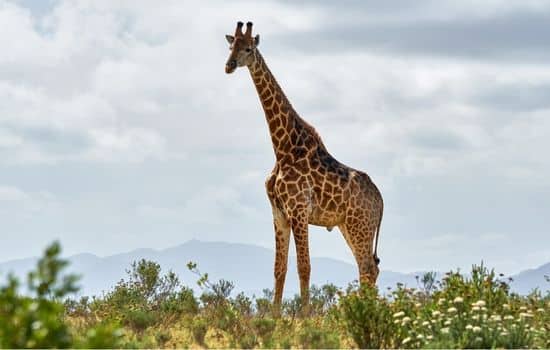Advertisements
Today's topic is the incredible world of Giraffes, where I will tell you incredible curiosities about these beautiful animals.
Giraffes are mammals originating from Africa, their most striking features are their height and colors.
Advertisements
They are herbivorous animals that only feed on plants. Their favorite meal is plants known as acacias.
Females usually give birth to a single offspring. They are currently classified as vulnerable animals, as their population numbers are reduced.
Advertisements
SEE TOO
WHAT YOU NEED TO KNOW BEFORE GETTING A GUINEA PIG
FANCY FACTS ABOUT DOGS
Illegal hunting and habitat loss are some of the causes of the species' decline.
See Also:
Today, nine subspecies of giraffes are recognized. They differ in their geographical distribution and the pattern of spots on their bodies.
The main characteristics of the giraffe
Large animals, measuring around 5.7 m in height, and males are larger than females. Their weight varies between 1,180 kg and 1,930 kg.
Giraffes have long legs, with the front legs being longer than the back ones, and they also have a very long neck.
The tail can reach around 100 cm in length.
It also has large eyes and its tongue can measure up to 45 cm in length, an important characteristic for capturing food.
They have a coat with a characteristic pattern, spots in shades of brown.
The pattern of spots works like our fingerprints, differing in each individual.
The color of giraffes is important in the camouflage process. Their coat varies depending on their health and the season.
It is possible to see the presence of two bony structures covered in skin and hair on the giraffes' heads.
These structures are ossicones, special horns, which are formed from a bone that fuses with the frontal bone during development.
Giraffes live in herds of around 10 to 20 individuals, although there can be larger groups, as well as isolated individuals in the wild.
In the group, there is a dominant male.
Giraffe habitat
To the giraffes are found only on the African continent.
According to an agreement with the International Union for Conservation of Nature (IUCN), they live in 18 African countries and have been reintroduced into three others.
They live in savannas, prairies and open forest regions.
It is very common to find them in areas rich in acacias, one of the plants that are part of their diet.
An interesting fact is that, because they don't drink water often, they are found in environments where there is no water source.
Giraffe feeding
Their diet is exclusively based on vegetables, that is, they are herbivorous animals. Their diet: leaves, stems, flowers and fruits. Although they feed on several plant species, they prefer acacias.
Acacia is a plant that has thorns, however, the giraffe can remove the leaves with its tongue without hurting itself.
Giraffes' molar teeth can crush these spines, and their flexible lips help them catch food.

Giraffe reproduction
Female giraffes reproduce between 3 and 4 years, and males only begin to do so at around 7 years.
The female can reproduce every 20 to 30 months, and gestation lasts about 460 days.
At birth, she produces a single offspring, which occurs in the dry season, between May and August.
Weaning occurs between 12 and 16 months for females and between 12 and 14 months for males.
It can take 1 to 3 years for the cubs to become independent. The female tends to stay in the group.
On the other hand, the male may migrate in search of another group in which he can become dominant.
General curiosities about giraffes
- They are the tallest animals in the world;
- To the giraffes do not drink water daily;
- Males can eat up to 66 kg of food per day;
- They are fast animals, with a speed that varies between 32 and 60 km/h;
- They are animals that sleep standing up, but can also lie down;
- Females give birth standing up or walking and carrying the newborn calf down a drop of about two meters;
- In the neck of giraffes, there are seven elongated vertebrae;
- Giraffes can live around 33 years under supervision;
- In the wild, giraffes can live less than 30 years.
- Some researchers claim that life expectancy in these environments is a maximum of 10 to 15 years.
- Giraffes feed almost all day, almost 20 hours, and sleep little.
- Sleep is highly fragmented into short naps lasting about 11 minutes.
- In total, they sleep about four hours a day and usually do so standing up, to make it easier to escape if a predator appears.
- The position of the eyes is lateral, increasing their field of vision, and they can distinguish the colors red, orange, yellow, green and violet.
